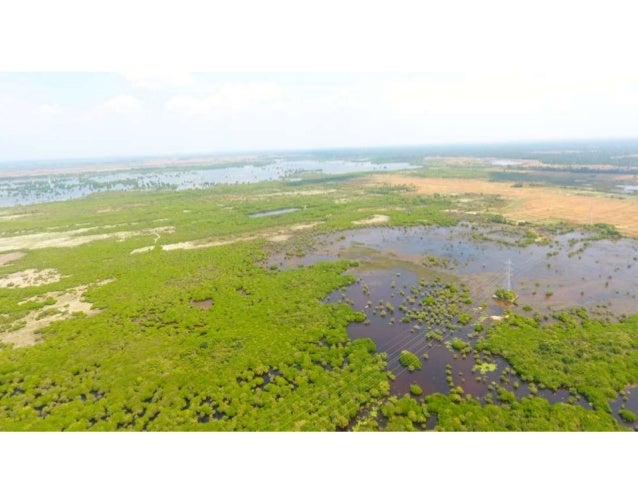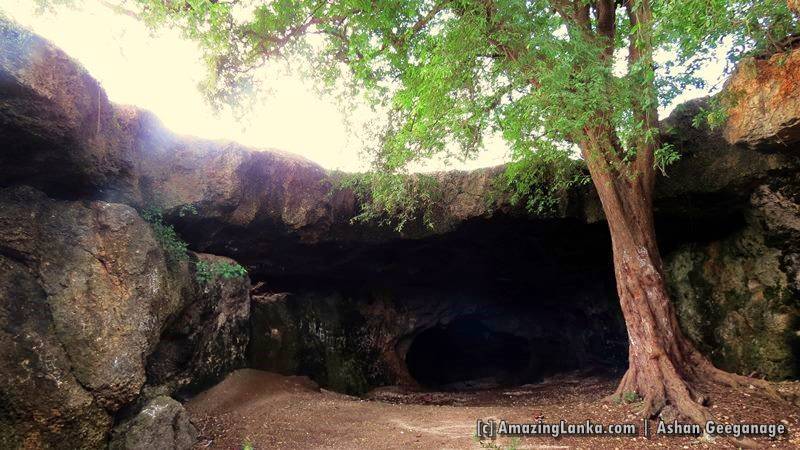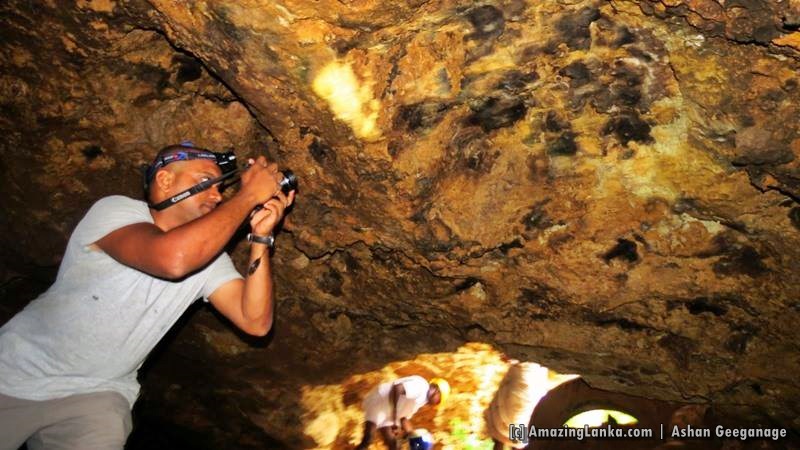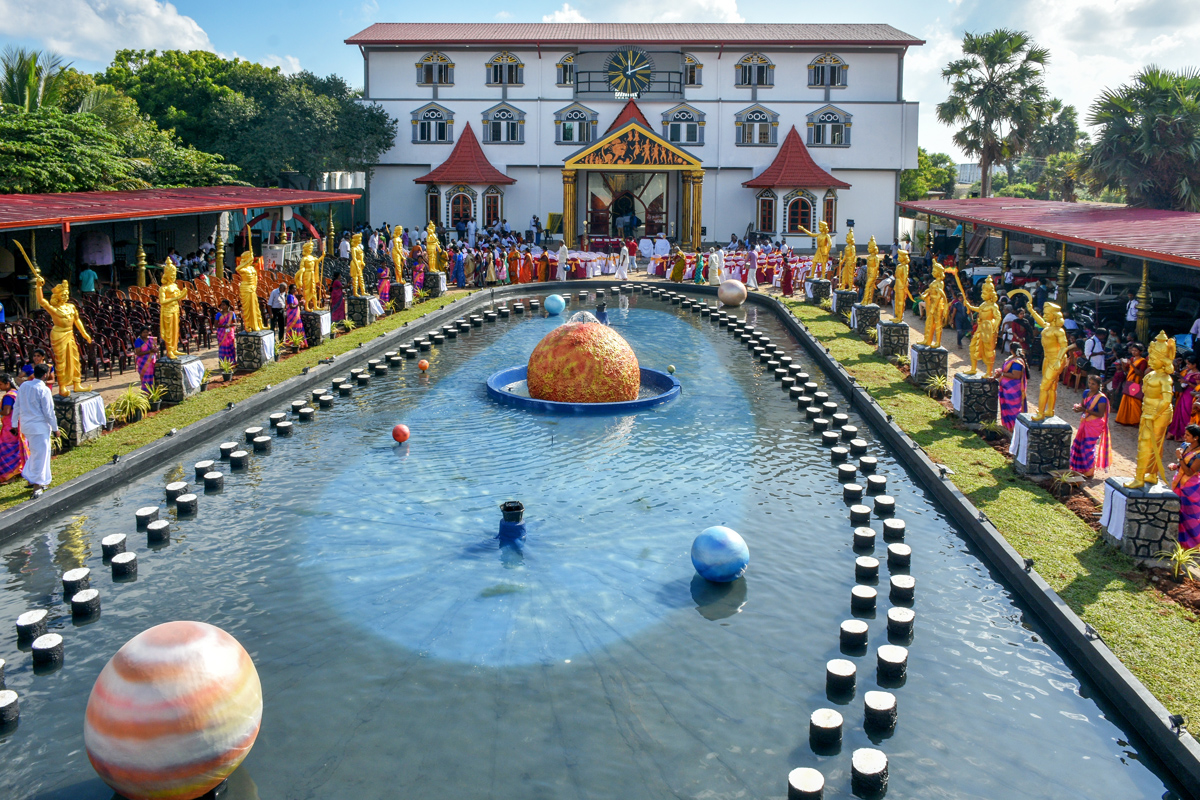BEST TOURIST PLACES IN JAFFNA DISTRICT OF SRI LANKA
TOURIST PLACES IN JAFFNA DISTRICT OF
SRI LANKA
Jaffna
is the capital city of the Northern Province of Sri Lanka. It is the
administrative headquarters of the Jaffna District located on
a peninsula of the same name. With a population of 88,138 in 2012, Jaffna
is Sri Lanka's 12th most populous city. Jaffna's suburb Nallur,
served as the capital of the four-century-long medieval Jaffna Kingdom.
There are more 40 tourist attractive places located in the Jaffna district of Sri Lanka such as MARUTHANARMADAM ANJANEYAR KOVIL,MUNIYAPPAR KOVIL,EARLALAI ELU KOVIL,KADURUGODA TEMPLE,NILAVARAI BOTTOMLESS WELL, SARASALAI MANGROVE ECOSYSTEM,KARAVEDDI LAGOON,NAGARKOVIL BEACH,MANALKADU BEACH, MANALKADU SAND DUNES,POINT PEDRO LIGHTHOUSE & POINT, LIMESTONE CAVES, SELVASANNITHTHI MURUGAN KOVIL, KKS BEACH, KEERIMALAI SACRED WATER SPRING, KEERIMALAI NAGULESWARAM KOVIL, DAMBAKOLA PATUNA TEMPLE, VARATHARAJA PERUMAL TEMPLE, CASUARINA BEACH, FORT HAMMMENHIEL, NAVATKULI BRIDGE & DAM, JAFFNA KINGDOM RUINS, NALLUR KANDASWAMI KOVIL, JAFFNA ARCHAEOLOGICAL MUSEUM, JAFFNA PUBLIC LIBRARY, JAFFNA MARKET, JAFFNA FORT ARCHAEOLOGICAL SITE, CHARTY BEACH, NAAADAPOOSHANIAMMAN TEMPLE, NAAGADEEPA TEMPLE, THE GROWING STONE, BAOBAB TREE, PIGEON’’S NEST,SEVEN WELLS BEACH, DELFT DUTCH FORT, MEEHAMAN FORT, VADIYARASAN FORT OLD STHUPA, DUTCH HORSE STABLE DELFT
1.MARUTHANARMADAM
ANJANEYAR KOVIL
Maruthanarmadam Anjaneyar Temple is located in Jaffna. Maruthanarmadam (Cunnakam)
Anjanajar (Hanuman)
statue is 72 feet high and established in early 2013. Maruthanarmadam Temple left side of this statue.
2.
MUNIYAPPAR KOVIL
3. EARLALAI ELU KOVIL
The temple at Chunnakam village is a famous
temple which attracts a lot of devotees from all around Jaffna, even though the
temple is only functioning at certain times of the year. The temple sits
proudly amidst agricultural fields acting as their protector
4.KADURUGODA TEMPLE
One of the few Buddhist temples in Jaffna,
which is also an archaeological site, maintained by the Sri Lanka Army. The Sri
Maha Bodhi tree in Sri Lanka is from a sapling from the sacred fig tree under
which Lord Buddha attained enlightenment. The Sri Maha Bodhiya was brought into
Anuradhapura (it is current resting place) from India. The sacred bo tree
sapling was first brought to Dambakolapatuna (in Jaffna) and én-route to
Anuradhapura, it is written that Sangamitta thero visited Kadurugoda temple. At
present one can see around 20 smaller stupas (records show in 1917, there had
been 56 stupas) on site which are believed to house the remains of 60 monks who
have attained Arahath status.
5.NILAVARAI BOTTOMLESS WELL
6.SARASALAI MANGROVE ECOSYSTEM
A fascinating mangrove ecosystem exists in Sarasalai. It is a significant area for the ecosystem of Jaffna. Many reptiles and amphibians exist in those mangroves.
7.KARAVEDDI LAGOON
8.NAGARKOVIL BEACH
The Nagarkovil beach is connected with the
history of Jaffna is a major way. The remains of an Ayyanaar temple can be seen
on the beach. It is said that there had been a Jain temple built long ago and
the beach had eroded over time and now this temple is under water in the Indian
Ocean. Another white sandy beach with a village closes by with a famous Murugan
kovil with its own festival.
9.MANALKADU BEACH
10.MANALKADU SAND DUNES
This is an amazing stretch of sand dunes which towers up to 16 meters at certain points. There are many ruins buried in these dunes, one of them being an ancient catholic church from the Dutch era, dedicated to St. Anthony’s. The walls of the church can be seen when the sand dunes move from time to time.
11.POINT PEDRO LIGHTHOUSE & POINT
12.LIMESTONE CAVES
A natural cave system can be found in Jaffna which is called the Periya Mandapam limestone caves. This is a lesser-known place even for the locals. A huge tree in the middle of the cave entrance stands guard providing shade to the entrance.
13.SELVASANNITHTHI MURUGAN KOVIL
A beautiful mangrove ecosystem
exists in Sarasalai. This is an especially important area for the ecosystem of
Jaffna. There are many reptiles and amphibians living in these mangroves. For
those who are interested in photographing mangroves and the animals living in
it, this is a very good place to be.
14.KKS
BEACH
KKS or Kankasanthurai has another long beach and crystal-clear water. This beach used to be the naval hub of the Sri Lankan Navy. But today this is a family friendly beach where many locals come to visit. The KKS lighthouse can be seen from a distance as well. This is a famous fishing village where the harbour is located close by as well
15.KEERIMALAI SACRED WATER SPRING
16.KEERIMALAI NAGULESWARAM KOVIL
| old Naguleswaram temple |
| New Temple built near the old temple |
Destroyed by the Portuguese and later restored to its present glory. Visitors can still see the ancient temple’s crowning glory, the gopuram which itself is incredibly beautiful and rustic.
17.DAMBAKOLA PATUNA TEMPLE
18.VARATHARAJA PERUMAL TEMPLE
The temple is dedicated to Lord Perumal which
is another name for Lord Vishnu, who is one of the main deities of Hinduism. On
Sundays you can see a lot of devotees gathering to this temple for its weekly
pooja. Every year there are two local festivals that happen in the months of
August and December. Lord Vishnu is the protector of this universe whereas Lord
Shiva is recognized as the destroyer and Lord Brahma is the creator.
19.CASUARINA BEACH
This is the most famous beach
on the Northern province with its shallow waters and white sandy beaches. There
are small trees and shrubs that provide perfect cover from the hot sun if you
feel like taking a break. The shoreline of the Casuarina beach is incredibly
beautiful which ends in one corner with the Karainagar lighthouse. It is an
hour’s drive from the Jaffna city to the beach.
20.FORT HAMMMENHIEL
This is one of the oldest and
historical Portuguese forts which had also been used as a prison up until the
1980s. Today the fort is run like a resort and they provide you with the
accommodation option of sleeping in a cell. If you want to be “locked up” for
the night, then this would be the ideal place to be knowing that there’s a 100%
guarantee that you will be let out of your cell at any time you want.
21.NAVATKULI BRIDGE & DAM
This is an exceptionally good
bird watching location since many migratory bird species can be seen feeding
off the edges of water. Many duck species can be seen floating over the water
in the dam which is a very pretty sight. Going to the dam early in the morning
will be the way to go, if you are expecting some good bird sightings.
22.JAFFNA KINGDOM RUINS
23.NALLUR KANDASWAMI KOVIL
This temple is dedicated to God Murugan who is the God of war, who is also called the philosopher-warrior god. He is the son of great Shiva and Parvati and is the brother of Ganesh. This temple is one of the most famous temples in Sri Lanka. It had been destroyed many times by the invaders but has always been reconstructed. This temple hosts one of the most popular festivals in the country called “Nallur Festival”. It is located in the heart of the city.
24.JAFFNA ARCHAEOLOGICAL MUSEUM
A small museum compared to the other museums in Sri Lanka, this has a rare collection of Buddhist and Hindu antiquities. The artifacts are made out of wood, metal, and stone. This is a good location to understand a little bit about the lost culture in the Jaffna kingdom. The museum also has a cultural hall. Many who visited the museum had commented that this was more of a collection than a museum.
25.JAFFNA PUBLIC LIBRARY
26.JAFFNA MARKET
An assortment of unique local specialties in the heart of Jaffna. A colourful world of northern goods and produce, the Jaffna Market is filled with exotic souvenirs that are hard to find elsewhere in Sri Lanka. In addition to shops filled with eclectic clothes and ornaments, the market also features an open-air section with fruits, vegetables and other northern foodstuffs. For example, the abundance of palmyrah products is immediately noticeable – from flour to jaggery to edible sticks, and more.
27.JAFFNA FORT ARCHAEOLOGICAL SITE
28.CHARTY BEACH
Another famous beach, which is filled with
white sand, coconut and palmyra trees. A 20-minute drive from the city, this
area is also called as Kayts. There are a couple of beach resorts in the
vicinity which allows the visitors with the option of accessing this beach
better from their hotels. There are several huts along the beach which allows
visitors to take a break from taking their tan.
29.NAADAPOOSHANI AMMAN TEMPLE
There are 51 sacred shrines in the world according to the Energy Worship / Shaktism which is a Goddess centric tradition in Hinduism. Out of these 51 shrines, many are in India with 7 in Bangladesh, 3 in Pakistan, 3 in Nepal, 1 in Tibet and 1 in Sri Lanka. That is how far the temple’s history and popularity travel back to.
30.NAAGADEEPA TEMPLE
Lord Buddha visited the Nagadeepa Island to
settle a dispute between two kings – Chulodara and Mahodara over a gem-studded
throne. It is said that the Lord Buddha donated this throne to the ruler of
Kelaniya who enshrined it and built the Kelaniya temple which is located close
to Colombo today. In Buddhism in Sri Lanka, there are 16 venerated places
identified as places of worship due to their direct connections to Lord Buddha.
The two kings were astonished by the “Dhamma” and they settled their dispute
and offered the gem-studded throne to Lord Buddha. Lord Buddha preached the
“Dhamma” to the two kings about compassion. Nagadeepa temple is one of those 16
places in Sri Lanka.
31.THE GROWING STONE
The history behind this stone is lost in time
but the elderly locals who have lived in the island their whole life tells that
they have seen this stone grow over the years. Similar to the growing stone in
Nagapooshani Amman Kovil, there is another lesser-known growing stone in the
Delft Island. The locals worship this stone and it’s considered as a small
shrine where lamps are lit and offerings are made.
32.BAOBAB TREE
33.PIGEON’S NEST
This pigeon’s nest has been constructed using
corals from the ocean, by the Dutch. Pigeons are said to have a good memory and
hence they have been used to fly from one location to the other. It’s a one
hour’s boat ride from Delft Island to mainland and to think that pigeons flew
over the Indian ocean for over an hour is quite amazing. The message was
written on a piece of paper and have been tied to the leg of the pigeon. During
the colonial times, birds were used for communication.
34.SEVEN WELLS BEACH
The water is noticeably clear as well. One of
the best white sandy beaches in Sri Lanka is located inside Delft Island. If
you are in the habit of collecting shells off the beaches around the world,
this is the place to be.
35.DELFT DUTCH FORT
Ralph Henry Bassett describes the Delft Dutch
Fort in his book “Romantic Ceylon: It’s History, Legend and Story” in great
detail. We would highly recommend this book as some quality reading material on
your travels through Sri Lanka to help you develop an understanding of how life
was during the colonial period through the eyes of a European traveller. It was
first said to have been built by the Portuguese during their occupation of
Ceylon and Ralph describes it as being a “very strong, fortified fort”.
36.MEEHAMAN FORT
In
one corner is the dungeon, a small square room, with a floor below ground
level. Without any door, and having only one small window about two feet
square, leading into the interior of the fort. The stairs run in the double
walls lead out on to what must have been a flat roof, judging from the marks of
the rafter sockets in the masonry. It is a very strongly fortified
two-storied dwelling, covering an area about fifty yards square, with a double
centre wall of immense thickness. The older surviving building here, as well as
the most iconic is the Dutch reformed fort. The Dutch Fort, which was also used as a prison,
has very small rooms and 2 ½ feet thick walls. This wall completely cuts the
fort in half at Ground-level, the only means of communication being on the
first floor-a common precautionary measure in defensive structures of that
period. As a result, it is a very complicated edifice, full of long narrow and
little square rooms. The
stairs run in the double walls and lead out on to what must have been a flat
roof, judging from the marks of the rafter sockets in the masonry. Remains of
the Dutch can be seen in 300 years old fort along the coast in Delft. This was
built by the Dutch using their colonial architecture of their era. The
unfortunate prisoners must have been pushed in through this little aperture, or
let down through a trapdoor in the floor above, and could have got out only by
means of a rope; a good many must have met their death in this little chamber.
This was built by the Dutch adopting their own architectural pattern. There is
one large room which has the appearance of a mess-room, and a large number of
small sleeping-rooms connected by corridors.
37.DUTCH HORSE STABLE DELFT LSLAND
38.LORD HANUMAN’S FOOT PRINT
There is a huge footprint that the locals
believe is the footprint of Lord Hanuman, made during his journey from India to
Sri Lanka with a part of Himalaya Mountain on his back to save Lord Lakshman
when he was gravely injured. Those who are on the Ramayana trail make it a
point to visit the Delft Island to witness this amazing footprint of Lord
Hanuman.
39.WILD
HORSES
Since
the end of the Portuguese Occupation, these 2000+ wild horses roam around and
seem to enjoy blocking the non-existent traffic by walking along the roads. It
is truly interesting to see how an animal species entirely alien to this
island, has made their home here for the last 300 years. The laws of the
sanctuary within the island allow this luxury, by providing them with protection,
food and water to sustain them. The Delft Wild Horses were originally brought
here by the Portuguese for trading purposes and to bolster their army.
40. QUEEN’S TOWER

















